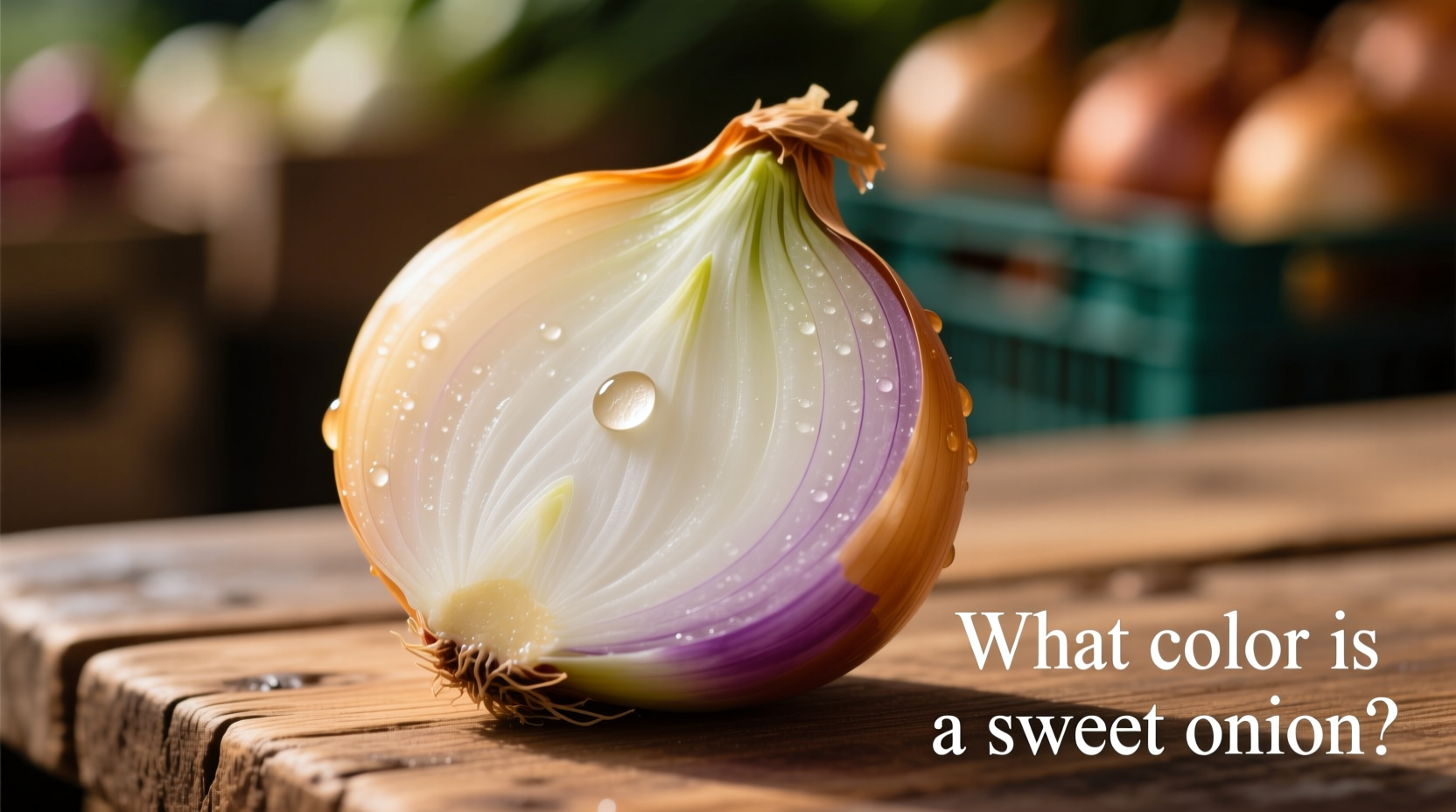Discover exactly how to identify sweet onions at the grocery store and understand why their distinctive color matters for your cooking. This guide provides clear visual identification tips, explains the subtle color differences between popular sweet onion varieties, and helps you select the freshest bulbs every time.
Understanding Sweet Onion Color Characteristics
When you're standing in the produce section wondering what color is a sweet onion, look for bulbs with pale yellow to light golden skin. The most common sweet onion varieties—including Vidalia, Walla Walla, and Maui—share this characteristic light coloring that distinguishes them from more pungent onion types.
Unlike standard yellow onions with their thick, brownish-gold skins, sweet onions have thinner, more delicate outer layers. Their flesh appears more translucent and ranges from pure white to pale yellow, never developing the deep yellow tones of storage onions.
| Onion Type | Outer Skin Color | Flesh Color | Distinctive Features |
|---|---|---|---|
| Sweet Onions | Pale yellow to light golden | White to pale yellow | Thin skin, high water content |
| Yellow Onions | Golden brown | Yellow to deep yellow | Thick papery skin, strong flavor |
| Red Onions | Purple-red | White with purple rings | Vibrant color, crisp texture |
| White Onions | Pure white | White | Sharp flavor, common in Mexican cuisine |
Why Sweet Onion Color Matters for Cooking
The lighter color of sweet onions directly correlates with their milder flavor profile. According to agricultural research from the University of Georgia Cooperative Extension, sweet onions contain less sulfur compounds than their yellow counterparts, resulting in both the lighter coloration and reduced pungency.
When selecting sweet onions for raw applications like salads or salsas, look for bulbs with the most uniform pale coloring. Any dark spots or green sprouting indicates aging and potential flavor deterioration. The USDA Agricultural Research Service notes that sweet onions maintain optimal quality when their color remains consistent from skin to flesh.

Seasonal Availability and Color Changes
Sweet onions follow a specific seasonal timeline that affects their appearance:
- March-May: Early season Vidalias appear with very thin, almost translucent skins
- May-July: Peak season shows the characteristic pale yellow color at its most vibrant
- August-October: Late season bulbs develop slightly thicker skins but maintain light coloring
- November-February: Limited availability; often stored bulbs may show slight darkening
Unlike storage onions that deepen in color over time, sweet onions should maintain their light appearance throughout their relatively short shelf life. Any significant darkening indicates the onion is past its prime.
Practical Selection Tips for Home Cooks
When shopping for sweet onions, use these color-based selection criteria:
- Choose bulbs with uniform pale yellow coloring without dark spots
- Pass on onions with green sprouts emerging from the top
- Select firm bulbs that feel heavy for their size
- Avoid any with soft spots or visible mold
- For the sweetest flavor, pick onions with the most translucent appearance
Remember that sweet onions have higher water content than yellow onions, which contributes to both their lighter color and shorter shelf life. Properly stored in a cool, dry place away from direct sunlight, they'll maintain their characteristic pale coloring for 2-3 weeks.
Common Misidentifications to Avoid
Many shoppers confuse sweet onions with other varieties. Here's what to watch for:
- White onions: Often mistaken for sweet onions but have sharper flavor
- Young yellow onions: Sometimes sold as "sweet" but lack true mildness
- Red onions: Completely different color profile and flavor characteristics
The most reliable indicator remains the pale yellow to light golden skin color combined with the bulb's firmness and lack of strong odor when raw.











 浙公网安备
33010002000092号
浙公网安备
33010002000092号 浙B2-20120091-4
浙B2-20120091-4